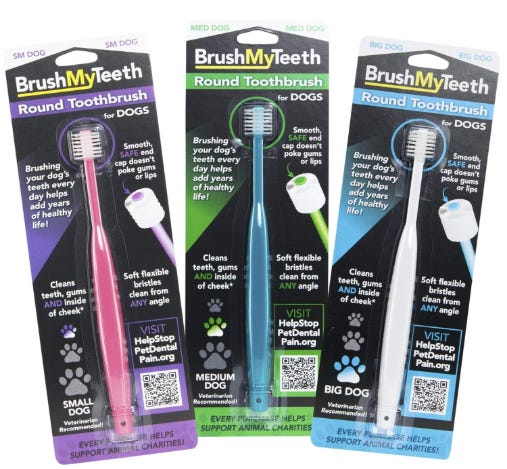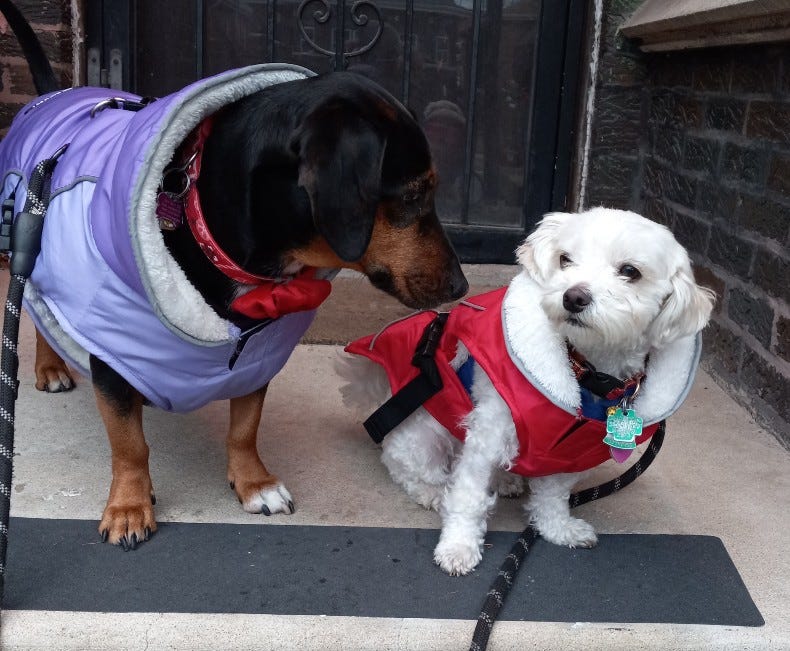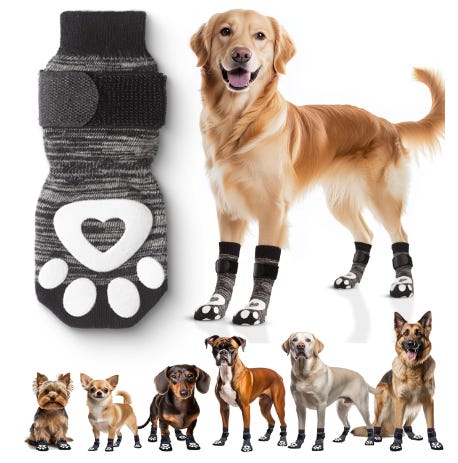I’ve never been a super fan of dog clothes, dog shoes, dog barrettes and anything else that makes a dog look like a small baby. But when I adopted a short-haired dog, I realized fairly quickly that she had different needs than my prior Labrador mix and German Shepherd. I was proven wrong about the dog clothes twice — with her and my mother’s Shih Tzu mix, who basically looked like she was freezing when she stepped out the door even with a dog sweater and dog coat on.
ADVERTISEMENT ~ Amazon
As an Amazon affiliate, I earn a percentage from purchases with my referral links. I know some consumers are choosing to boycott Amazon for its DEI removal. However, after thinking about this thoroughly, I choose to continue promoting intriguing products from small businesses, women-owned businesses and (specifically) Black-owned businesses who still feature their items on Amazon. All five of my Substack publications now include a MINIMUM of one product sold by a Black-owned business. (I have visited the seller’s official site, not just the Amazon Black-owned logo, to verify this.) If you still choose to boycott, I 100% respect that decision.

Within a minute or two, I scooped her under my winter coat and carried her majority of the walk, only letting her down when she wiggled to pee and poop. (The stubborn dog refused to return home after seeing how easily my own dog was walking in a dog coat.) But dog socks (and dog shoes) always make first-timers look like they’re trying to mimic horses, and I immediately want to yank them off of dogs’ paws — until I see a different dog wearing dog socks and trotting along as easily as I do in winter boots.
ADVERTISEMENT ~ Amazon
As an Amazon Affiliate, I earn a percentage for each purchase with my referral links.
I asked a neighbor how he managed to get his dog to wear the socks, and he responded that his dog refuses to leave without dog socks on. As a matter of fact, his dog does that “Hot Potato” dance with one paw lifted as if the ground is too hot or too cold to walk on until those dog socks come out. So it’s not the socks that are the problem; it’s finding dog socks that actually work well for each dog.
For pet owners who aren’t quite sure how to introduce dog footwear to their pets, this FAQ rundown answers eight questions to make sure your purchase is both comfortable and effective during the winter months (and hot, sandy days too).
ADVERTISEMENT ~ Amazon
As an Amazon Affiliate, I earn a percentage for each purchase with my referral links.
1. How do I know what size dog socks to buy?
Even if your dog is receptive to the idea of dog socks, if they’re falling off the dog’s feet or the dog’s paws are suffocating in the socks, practicing walking in the socks won’t go over well at all. Measure your dog’s paw width and length, and compare it to the dog sock chart. Just as dog coats are sometimes made smaller or larger, don’t assume your dog will always wear the same size in different brands. And dog socks with back straps are especially significant because even if they fit the dog’s feet, if the dog cannot comfortably turn from side to side, this can be painful.






